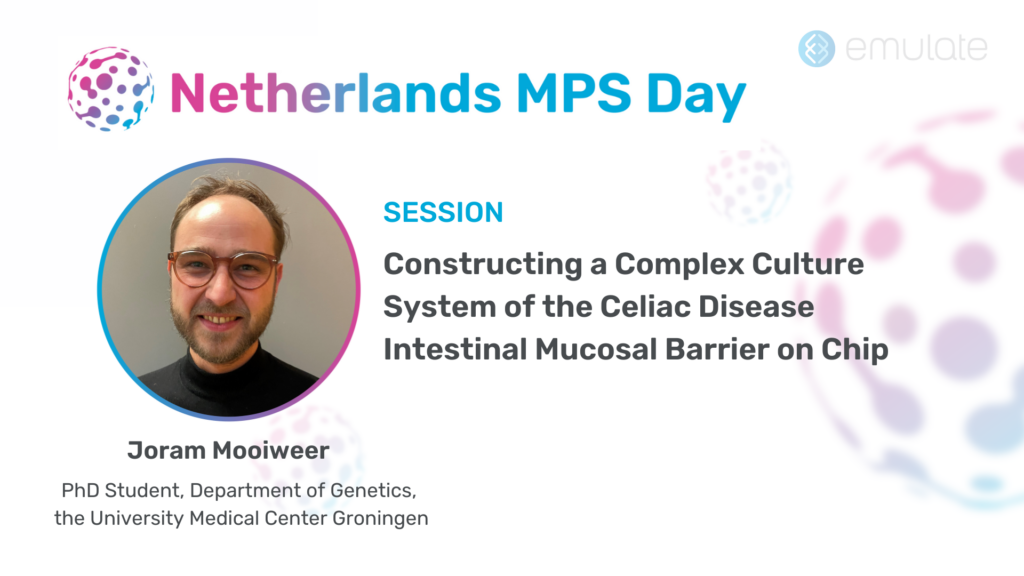Featured session at Netherlands MPS Day, which took place on November 15, 2023.
Joram Mooiweer from the University Medical Center Groningen presented his team’s work on modeling celiac disease using advanced human-relevant systems, including intestinal organoids and Organ-Chips. Celiac disease involves a complex interplay of genetic predisposition, immune responses (especially from tissue-resident T cells), and interactions with the intestinal epithelium and microbiota. By taking advantage of patient-derived tissue and induced pluripotent stem cells (iPSCs), the group aims to reconstruct these intricate processes in vitro.
Mooiweer highlights two approaches to modeling celiac disease. First, using patient biopsies, they isolate both intraepithelial lymphocytes (IELs) and intestinal stem cells. Culturing organoids derived from these stem cells together with IELs in a carefully optimized co-culture medium, they can recreate aspects of the cytotoxic activity associated with celiac disease—something that can be further manipulated using bispecific antibodies. These co-cultures maintain viability of both the epithelial and immune cells, enabling exploration of celiac-related immune-mediated epithelial damage.
Second, the group also uses iPSCs from patients and controls to generate small intestine-like epithelial tissues that self-organize into complex, 3D folded architectures when seeded on chip. With the help of growth factor gradients, they achieve a cell-type composition and maturation state that closely mirrors the human small intestine, including various specialized epithelial cells and mesenchymal cell types. This system is genetically tractable and can be further refined to incorporate inflammatory cues, immune cells, and eventually patient-specific microbiota under physiologically relevant conditions.
Ultimately, these multifaceted in vitro platforms will enable mechanistic insights into how genetic variants influence celiac disease onset and progression. They also provide a foundation for modeling interactions between epithelial cells, immune cells, and environmental triggers, paving the way for more predictive and personalized therapeutic strategies.
Key learnings from this presentation include:
- Complex disease modeling: Celiac disease involves interactions among epithelial cells, immune cells (IELs), and environmental factors (gluten). Recreating these dynamics in vitro is essential to dissect underlying mechanisms.
- Patient-derived systems: Using biopsies, organoids, and expanded IEL populations, the team can simulate immune-driven epithelial damage in controlled culture environments.
- iPSC-derived intestinal tissue: iPSC-based models yield highly structured and diverse epithelial cell populations on a chip, reflecting small-intestine-like architecture and enabling genetic manipulation for studying disease-associated loci.
- Synergistic modeling strategies: Combining adult-stem-cell-derived organoids, iPSC-based tissues, immune cells, and future microbiota co-cultures provides a comprehensive platform for understanding celiac pathophysiology.
- Toward translational impact: These advanced human-relevant models aim to identify genetic factors and potential therapeutic targets, contributing to more tailored interventions in celiac disease and related intestinal disorders.

